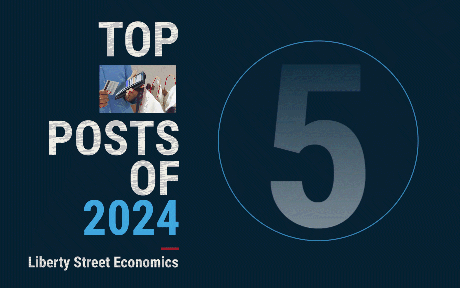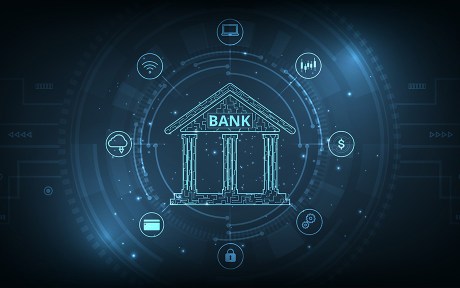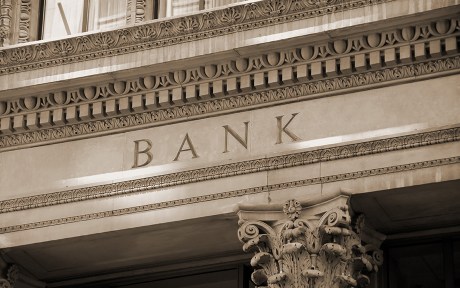Kenechukwu Anadu, Pablo D. Azar, Marco Cipriani, Thomas M. Eisenbach, Catherine Huang, Mattia Landoni, Gabriele La Spada, Marco Macchiavelli, Antoine Malfroy-Camine, and J. Christina Wang
Federal Reserve Bank of New York Feed Items
Why Are Credit Card Rates So High?
—Editor’s note: The second chart in this post has been updated to reflect the revised analysis presented in the research paper—Staff Report No. 1143 (October 16, 2025, 10:00 am).
Firms’ Inflation Expectations Have Picked Up
—Editors note: Since this post was published, we clarified language in the first paragraph about year-ahead expectations for manufacturing and service firms in the 2025 survey. We also corrected the y-axis range of Chart 2. (March 5, 11 a.m.)
Kartik Athreya on His First Year as Research Director of the New York Fed
—
A year has passed since Kartik Athreya became director of research at the New York Fed. To get some perspective on his experience thus far, we caught up with Kartik and asked about his views on economics, the role of Research at the Bank, and his take on a few of the hot topics of the day.
U.S. Imports from China Have Fallen by Less Than U.S. Data Indicate
—
With new tariffs on China back in the headlines, this post seeks to offer some perspective on how much China’s exports have really been affected by multiple rounds of U.S. tariffs and export restrictions over the past seven years. The key takeaway is that U.S. imports from China have decreased by much less than has been reported in official U.S. statistics. As a result, the recent tariff increase on China could have a larger impact on the U.S. economy than is suggested by official U.S. data on the China import share, especially if favorable tariff treatment for direct-to-consumer imports is ended.
Every Dollar Counts: The Top 5 Liberty Street Economics Posts of 2024
—
High prices and rising debt put pressure on household budgets this year, so it’s little wonder that the most-read Liberty Street Economics posts of 2024 dealt with issues of financial stress: rising delinquency rates on credit cards and auto loans, the surge in grocery prices, and the spread of “buy now, pay later” plans. Another top-five post echoed this theme in an international context: Could the U.S. dollar itself be under stress as central banks seemingly turn to other reserve currencies? Read on for details on the year’s most popular posts.
Documenting Lender Specialization
—
Robust banks are a cornerstone of a healthy financial system. To ensure their stability, it is desirable for banks to hold a diverse portfolio of loans originating from various borrowers and sectors so that idiosyncratic shocks to any one borrower or fluctuations in a particular sector would be unlikely to cause the entire bank to go under. With this long-held wisdom in mind, how diversified are banks in reality?
Why Do Banks Fail? The Predictability of Bank Failures
—
Can bank failures be predicted before they happen? In a previous post, we established three facts about failing banks that indicated that failing banks experience deteriorating fundamentals many years ahead of their failure and across a broad range of institutional settings. In this post, we document that bank failures are remarkably predictable based on simple accounting metrics from publicly available financial statements that measure a bank’s insolvency risk and funding vulnerabilities.
Banking System Vulnerability: 2024 Update
—
After a period of relative stability, a series of bank failures in 2023 renewed questions about the fragility of the banking system. As in previous years, we provide in this post an update of four analytical models aimed at capturing different aspects of the vulnerability of the U.S. banking system using data through 2024:Q2 and discuss how these measures have changed since last year.
What Do Climate Risk Indices Measure?
—
As interest in understanding the economic impacts of climate change grows, the climate economics and finance literature has developed a number of indices to quantify climate risks. Various approaches have been employed, utilizing firm-level emissions data, financial market data (from equity and derivatives markets), or textual data. Focusing on the latter approach, we conduct descriptive analyses of six text-based climate risk indices from published or well-cited papers. In this blog post, we highlight the differences and commonalities across these indices.
Exposure to Generative AI and Expectations About Inequality
—
With the rise of generative AI (genAI) tools such as ChatGPT, many worry about the tools’ potential displacement effects in the labor market and the implications for income inequality. In supplemental questions to the February 2024 Survey of Consumer Expectations (SCE), we asked a representative sample of U.S. residents about their experience with genAI tools. We find that relatively few people have used genAI, but that those who have used it have a bleaker outlook on its impacts on jobs and future inequality.